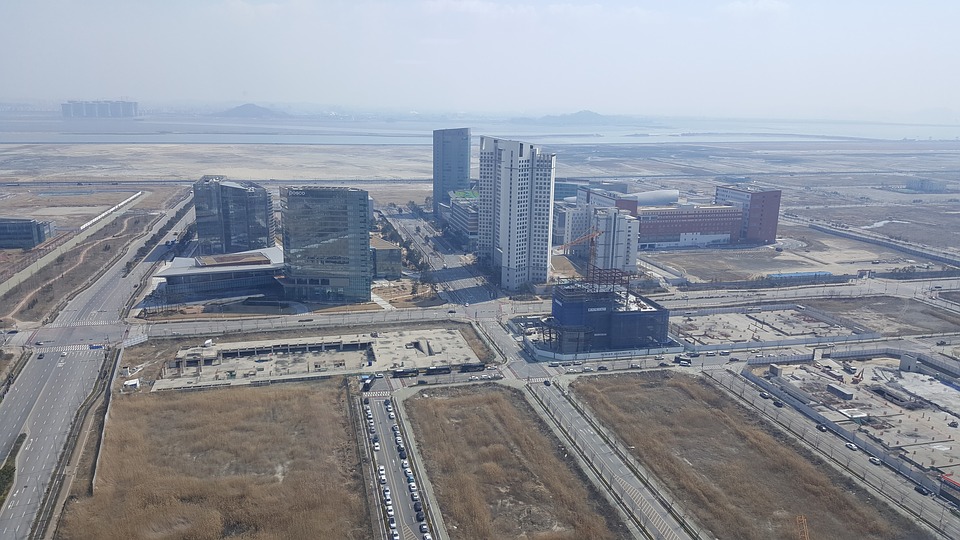Physical Address
304 North Cardinal St.
Dorchester Center, MA 02124
Physical Address
304 North Cardinal St.
Dorchester Center, MA 02124

Urbanist and YIMBY Twitter had a field day dunking on Nathan J. Robinson, whose essay in his publication Current Affairs called for building new cities in California. But California really could use some new cities - and we need to think about them in primarily economic terms.
Longtime Market Urbanism readers will know that we’re not huge fans of Joel Kotkin. But his most recent article on megacities (spoiler: the “triumphalism” surrounding them “frankly disturbs me”) sets a new low for sheer factual inaccuracy. I’m speaking specifically of his policy prescription, which appears to be based on the most innovative planning theories of 1911: One does not have to be a Ghandian idealist to suggest that Ebenezer Howard’s “garden city” concept — conceived as a response to miserable conditions in early 20th Century urban Britain — may be better guide to future urban growth. Rejecting gigantism for its own sake, “the garden city” promotes, where possible, suburban growth, particularly in land-rich countries. It also can provide a guide to more human-scale approach to dense urban development. The “garden city” is already a major focus in Singapore, where I serve as a guest lecturer at the Civil Service College. Singaporean planners are embracing bold ideas for decentralizing work, reducing commutes and restoring nearby natural areas. First of all, Singapore is flat-out not following a garden city model. The garden city is a very specific thing: It’s a turn-of-the-century suburban planning style with small, self-contained towns of relatively low-density buildings segregated with single-use zoning and surrounded by open fields. Singapore, on the other hand, is a typical high-density wealthy East Asian city-state with a strong downtown and a well-used metro system. Kotkin may have gotten the idea from what appears to be a Singaporean parks-building program called “Garden City” (here and here), but it’s of an entirely different magnitude than the traditional garden city, which is dominated open space. Given that Kotkin is a guest lecturer at a university in Singapore, he must visit from time to time, so I’m not quite sure how he could have missed that fact. […]
by Stephen Smith Adam Martin at William Easterly’s development blog Aid Watch has a post up warning about the tendency among developing nations to adopt Western styles wholesale, even if such styles are not even efficient in their countries of origin. He posits this as a sort of developmental Whiggishness, and cites education policy and intellectual property law as possible examples of the trend. We here at Market Urbanism, by virtue of language and location, tend to focus on urbanism in North America and Europe, but I thought this would be a good opportunity to discuss the state of urbanism in developing countries. The starkest example of misplaced developmental Whiggishness in planning I can think of is the city of Kuala Lumpur. The city was practically brand new when it was made capital of the Federal Malay States in 1895, and as a British protectorate, the Crown sent New Zealand planner Charles Reade to the Malaysian capital in 1921 to head its planning department. Schooled in the methods of the nascent Garden City movement in the UK, Reade made a name for himself by spreading the sprawling, proto-suburban style throughout Australia and New Zealand before his posting in British Malaya. Under Reade’s aegis, Kuala Lumpur became a test case for the movement’s applicability outside of the industrialized West. Unlike in the West, where dense, built-up urban cores relegated Garden City developments to small new towns and the outskirts of large cities, Kuala Lumpur offered an opportunity to build a metropolis from scratch as a Garden City. Charles Reade eagerly set to work building sprawling, low-density housing estates alongside wide roads which anticipated widespread private vehicle ownership. Residential, commercial, and industrial areas were segregated and separated by grassy, undeveloped parkbelts, characteristic of the Garden City style. Following independence, a nationalist Malaysian […]